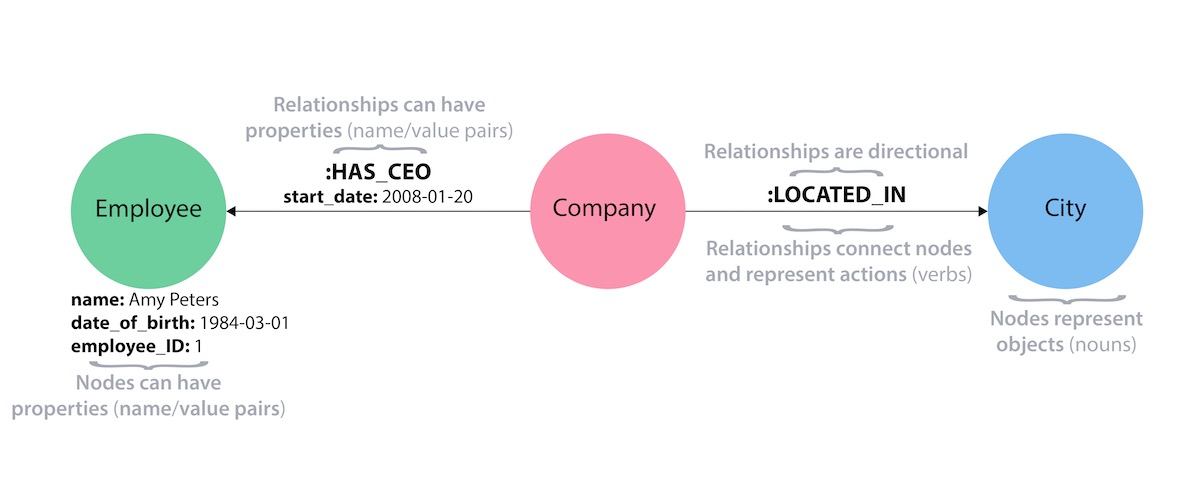Graph Database Horizontal Scaling
Region customer category or any other property and vertices as well as their edges get distributed to the same. So the ability to divide the graph database across many servers is key to scalability as well as the ability to support use cases such as compliance with data privacy regulations.
Neo4j A Graph Database That Kicks Buttox High Scalability
Featuring horizontal scalability strong data consistency high availability and SQL-like query language Nebula Graph database enables you to get insight out of.

Graph database horizontal scaling. Distribution and horizontal scalability also work well to support data locality because they make it possible to geo-locate parts of the graph near where they will be used. Spreading the load between the. Flockdb which is what is used by twitter does include as part of its design goals.
All of the graph databases discussed here have good horizontal scalability. Storage and computing separation. The horizontal scaling of the Graph Service.
Consider a rack of servers and resources that comprises of the existing system. I think we can now safely say that there are options for graph databases to scale vertically but in the case of ArangoDB also horizontally. Horizontal Scalability Designed from the ground up to be run in production Dgraph is horizontally scalable and distributed providing ACID transactions consistent replication and linearizable reads.
Horizontal scaling including replication. Neo4j does offer write-masterread-slaves approach for scaling out which is really nice but even that approach is limited at one point and in this post I am focusing on what happen when you go beyond that point. See multiple examples of how we relate the two functions and their graphs and determine the.
This is not the most natural fit for horizontally scaling data and. FlockDB which is what is used by twitter does include as part of its design goals. When new server racks are added in the existing system to meet the higher expectation it is known as horizontal scaling.
Both Neo4j and OrientDB do horizontal scaling. Consider the following example. Compared with other graph database solutions Nebula Graph has the following advantages.
Each edge and vertex can contain complex data in the form of nested properties and all graph functions are deeply integrated into the ArangoDB Query Language AQL. Nebula Graph is an open-source graph database capable of hosting super large scale graphs with dozens of billions of vertices nodes and trillions of edges with milliseconds of latency. Horizontal scaling means the stretching or shrinking the graph of the function along the x-axis.
Distribution pairs well with horizontal scalability. Horizontal scaling including replication. Suppose we have a function y fx Horizontal scaling of the above function can be written asy fCx.
The whole premise of native graph databases is the Index free adjacency which allows super effective traversing. Horizontal scaling can be done by multiplying the input with a constant. Some also support read replicas global distribution and.
By this approach combined with the edge index ArangoDB is one of the few graph databases capable of horizontal scaling. In a database world horizontal-scaling is often based on partitioning of the data ie. With the SmartGraph feature one can shard a graph dataset by a user defined sharding key eg.
The function f kx is a horizontal scaling of f. A large graph database may have a potentially unlimited number of nodes. As one server begins to fill up you can simply add another server and begin distributing data across the new server.
It follows the hybrid-index approach to graphs. Therefore increasing the number of Graph machines can increase the overall QPS of the cluster but cannot lower the latency of a single request. Each request from the client is handled by one and only one Graph server with no other Graph servers participating in the processing of the request.
Native GraphQL database with a graph backend. It carries performance penalties and it may be worth it to keep in mind that dense graphs do not scale well horizontally. ArangoDB is a multi-model graph database which scales horizontally like a document store also for graphs.
Each node contains only part of the data in vertical-scaling the data resides on a single node and scaling is done through multi-core ie.

Distributed Graph Database Features Of Arangodb

Graph Database Use Cases Performance Scaling Arangodb

Graph Database Use Cases Performance Scaling Arangodb

Graph Database Use Cases Performance Scaling Arangodb

Distributed Graph Database Features Of Arangodb

What Is A Graph Database Developer Guides

Posting Komentar untuk "Graph Database Horizontal Scaling"